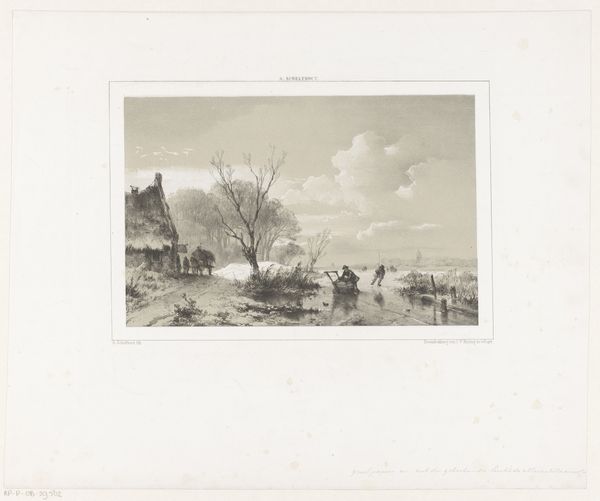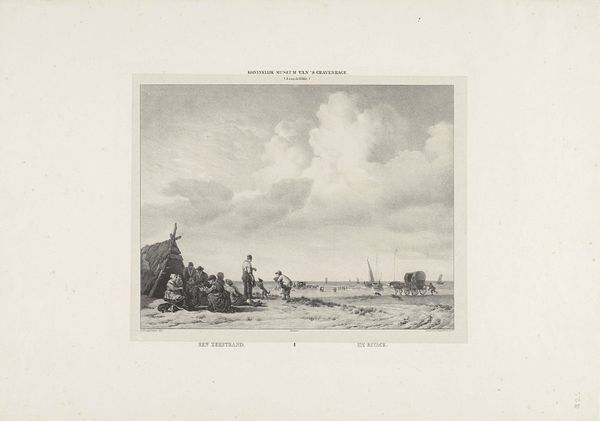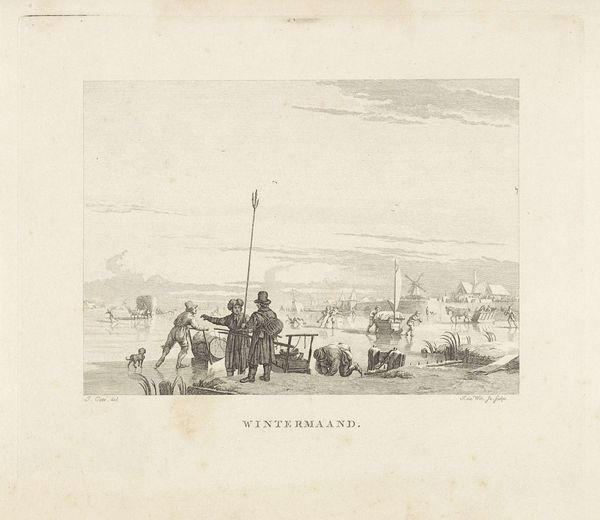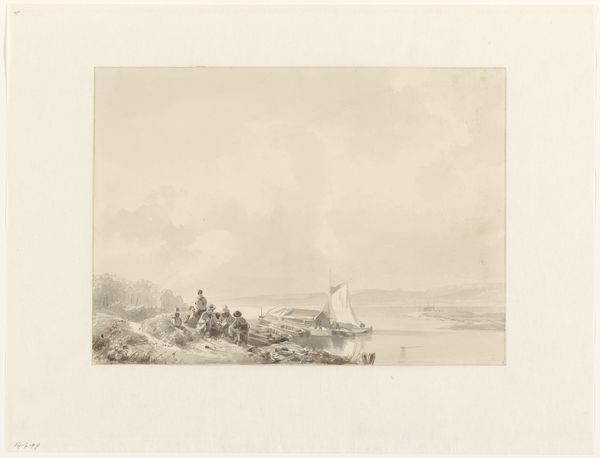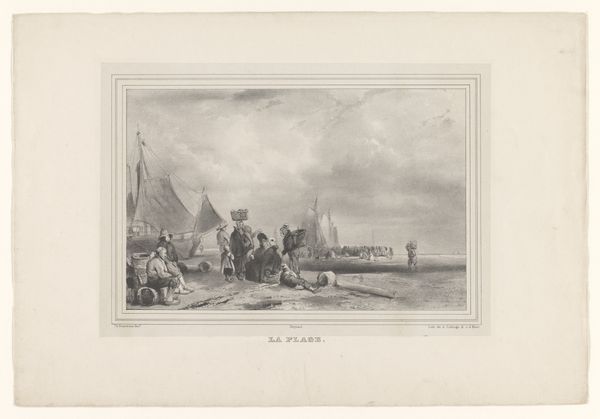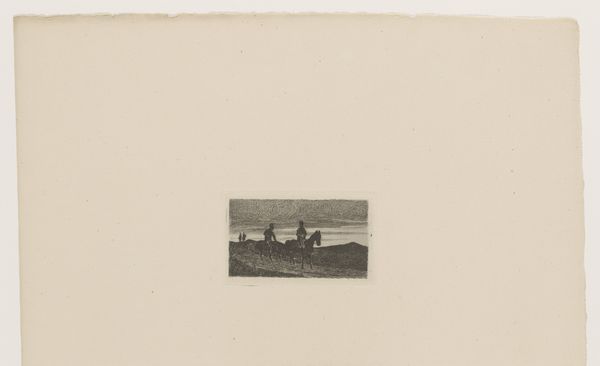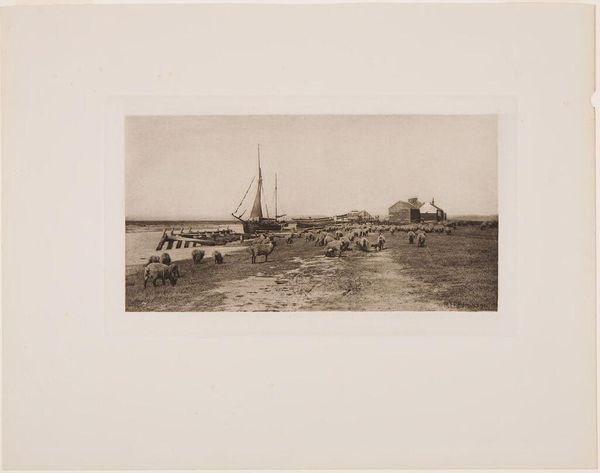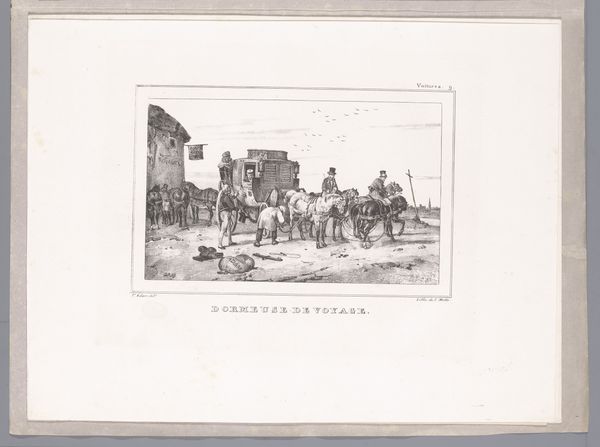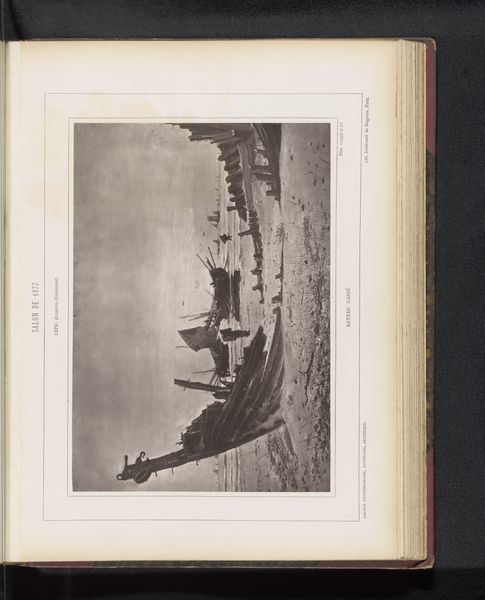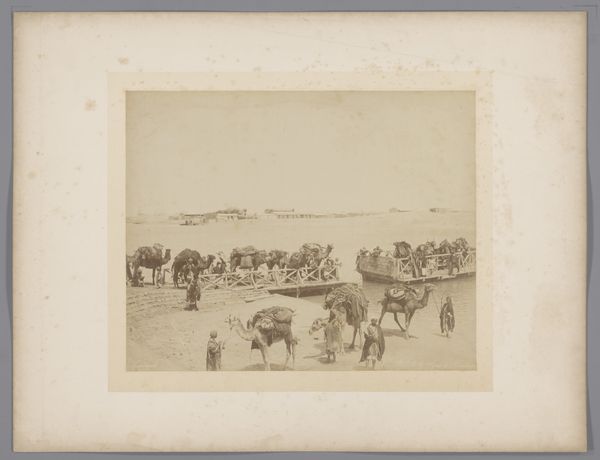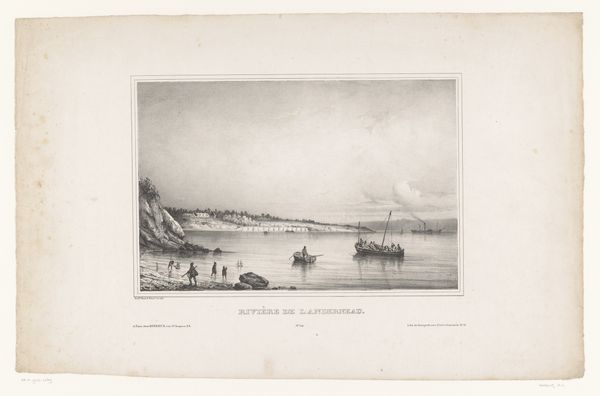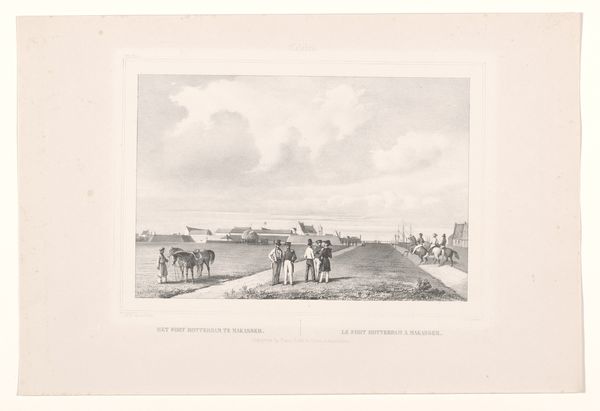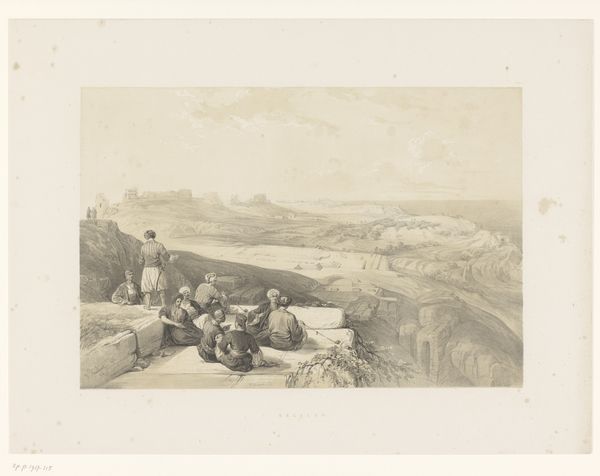
engraving
#
landscape
#
romanticism
#
genre-painting
#
engraving
Dimensions: height 376 mm, width 540 mm
Copyright: Rijks Museum: Open Domain
Curator: Here we have Gijsbertus Craeyvanger's "River Landscape with Hay Cart and Travellers on Horseback," created in 1833. It’s currently part of the Rijksmuseum collection. Editor: The light and figures emerging from the misty river… it immediately conjures this Romantic era fascination with nature and the sublime. The engraving looks as though it captured a moment on the cusp between stillness and a brewing tempest. Curator: Absolutely. Note the technique here. Engraving, as a process, is so dependent on meticulous labor; it’s about how the artist manipulates the material, creates those very subtle gradations in tone, from deepest shadow to near-white, by way of very physical exertion. Editor: Yes, and who are the figures inhabiting this landscape? Their journey across the water can speak volumes about societal mobility, about the tensions between land and water, between the cultivated and the untamed spaces that characterized this time. Class and labour seem interwoven in their traversal. Curator: True. The composition is designed to draw your eye from that loading of the boat on the left, across to the figures congregated near the hay cart, a visual bridge emphasizing the material labor in the fields being transported by water. We shouldn't ignore the material realities shaping this so-called "Romantic" idealization of rural life. Editor: And isn’t this also about the representation of labour? I look at this piece and I can consider whether this accurately depicts or idealizes agricultural work and commerce, especially in contrast to contemporaneous artistic conventions. We need to ask who benefitted from this specific vision and its place in a broader understanding of power. Curator: I agree with you in a theoretical sense. It makes us ponder how labor informs landscape, or the depiction of it in art, but it all starts with the process of production – for both the scene represented, and for the piece itself. Editor: Considering both social and production concerns in this case makes for a much more intricate read. It challenges any kind of one-dimensional read on either art history or social narratives. Curator: Precisely. Looking at the material creation of an engraving, alongside its representational content, expands the context of the artwork itself. Editor: And acknowledging both can bring a richness of the contextual and the technical into the historical landscape this artwork conjures up for us today.
Comments
No comments
Be the first to comment and join the conversation on the ultimate creative platform.
